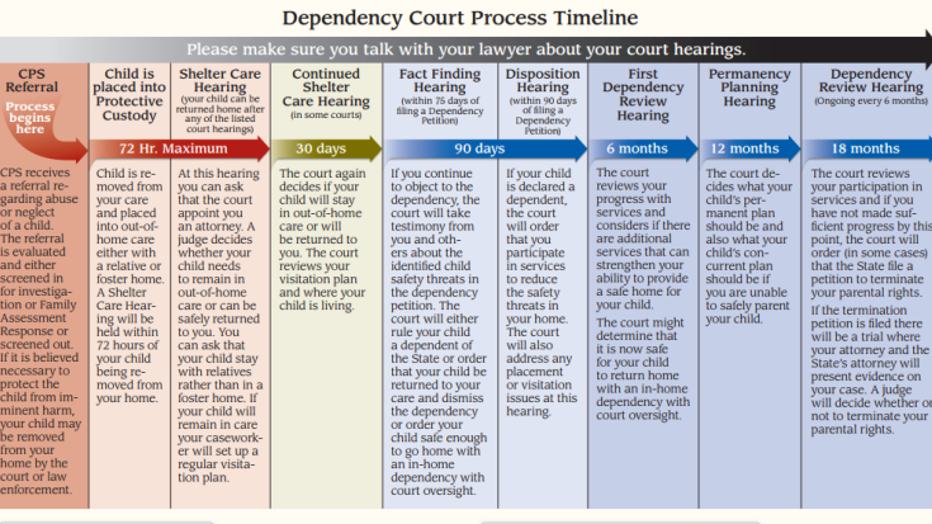Why were there kids at 'drug house' where Pierce County deputy was killed? Sheriff's office responds
TACOMA, Wash. -- Pierce County sheriff's detectives didn't mince words when it came to the condition of the home where deputy Daniel McCartney was shot and killed.
"This was a drug house," Pierce County Sheriff's Office Det. Ed Troyer said. "There were no beds in that house. Feces on the floor - human - those squalor conditions that nobody should live in."
Troyer also made clear who the two victims, the "only two victims" outside of the killed deputy, were in the home.
"The parents in this particular case are going to be held accountable," Troyer said. "There's a 2- and 3-year-old (at the home). Once again, these are the only two victims in that house."
Deputies were called 18 times to the house in the 5100 block of 200th Street E. over the past two years, the last being the night McCartney was shot. Neighbors and detectives knew it as a drug house, or "trap house." Earlier this year, visitors to the home reported a 3-year-old missing, only to find them later in the bathroom.
It was trouble, by all accounts.
Many Q13 News viewers have asked what happened to the children in the home after the deputy was shot. And if the house was a known drug house mired in squalor - why weren't the children put into protective custody a long time ago?
What happened to the children, and why were they living at the house?
In a press conference Wednesday, Troyer did not directly answer where the children were, but promised the sheriff's office was working hard get the children out of a bad situation.
"The 2 and 3-year-old, that is something we are working on now," Troyer told the media when asked about the children. "We just want to do it right."
He continued:
"They're not in any worse shape than they were before. And we want to make sure that we do everything right so the back end of this comes out good for them."
The Department of Social & Health Services couldn't say whether the children were still at the Frederickson home Thursday.
Related: Suspect in deputy’s murder was wearing body armor
When asked why children were living in the home to begin with, Troyer said late Sunday night was the first time kids were known to be permanently residing at the home.
The 2-and-3-year-olds' caretaker recently went to a rehabilitation clinic, and the children were dropped off the house and only living there for a short time before the shooting.
"There weren't children living there last time we were called," Troyer said Thursday, mentioning DSHS had never been referred to the home because no children were believed to be living there.
When asked why deputies were called to the home last year on a report of a missing child, Troyer said the child belonged to one of the home's many visitors. The apparently lost child was not a permanent resident of the home.
The process of putting children in state custody
A DSHS spokesperon said putting a child into protective custody is very case-dependent and "really depends a lot on the given situation."
On average, the department receives 100,000 reports of suspected child abuse and neglect each year, West said. The department responds in-person to roughly 40,000 of those reports. From there, reports are either elevated to a full Child Protective Services investigation, or families are helped and no investigation is launched.
Typically, it is a lengthy process to see a child into state care, the spokesperson said.
At any given time, there are about 9,000 children under the care of the state, whether in foster homes or with relatives.
If it is believed a child is in "imminent harm," a child can be immediately removed from a home and placed into state care for a maximum of 72 hours. This can be at the request of a judge, or law enforcement.

From DSHS.
Washington has specific laws that address the issue of substance abuse by parents, and when children should be taken out of the home related to parental use or exposure.
A parent or caretaker knowing or intentionally permitting a child to be exposed to methamphetamine is a Class B felony in Washington. Often times, when drugs are found present in a home with a child, DSHS can order a physican test to determine parental dependency.
The DSHS spokesperson reiterated that it is never up to either law enforcement or DSHS to permanently remove a child from a home, but up to the courts.
Anyone who suspects a child may be in danger or harmed by their caregiver is encouraged to call 1-866-ENDHARM and report the abuse.

